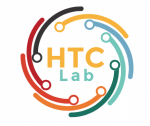The research paradigm of the Observation–Hypothesis–Prediction–Experimentation loop has been practiced by researchers for years towards scientific discovery. However, with the data explosion in both mega-scale and milli-scale scientific research, it has been sometimes very difficult to manually analyze the data and propose new hypothesis to drive the cycle for scientific discovery.
In this paper, we introduce an Explainable AI-assisted paradigm for science discovery. The key is to use Explainable AI (XAI) to help derive data or model interpretations and science discoveries. We show how computational and data-intensive methodology — together with experimental and theoretical methodology — can be seamlessly integrated for scientific research. To demonstrate the AI-assisted science discovery process, and to pay our respect to some of the greatest minds in human history, we show how Kepler’s laws of planetary motion and Newton’s law of universal gravitation can be rediscovered by (explainable) AI based on Tycho Brahe’s astronomical observation data, whose works were leading the scientific revolution in the 16-17th century. This work also highlights the importance of Explainable AI (as compared to black-box AI) in science discovery to help humans prevent or better prepare for the possible technological singularity which may happen in the future.
In this paper, we introduce an Explainable AI-assisted paradigm for science discovery. The key is to use Explainable AI (XAI) to help derive data or model interpretations and science discoveries. We show how computational and data-intensive methodology — together with experimental and theoretical methodology — can be seamlessly integrated for scientific research. To demonstrate the AI-assisted science discovery process, and to pay our respect to some of the greatest minds in human history, we show how Kepler’s laws of planetary motion and Newton’s law of universal gravitation can be rediscovered by (explainable) AI based on Tycho Brahe’s astronomical observation data, whose works were leading the scientific revolution in the 16-17th century. This work also highlights the importance of Explainable AI (as compared to black-box AI) in science discovery to help humans prevent or better prepare for the possible technological singularity which may happen in the future.
Latest posts by Ryan Watkins (see all)
- Needed in Empirical Social Science: Numbers - June 23, 2024
- Investigating the Role of Explainability and AI Literacy in User Compliance - June 20, 2024
- Philosophical debate on use of AI in science - June 9, 2024
